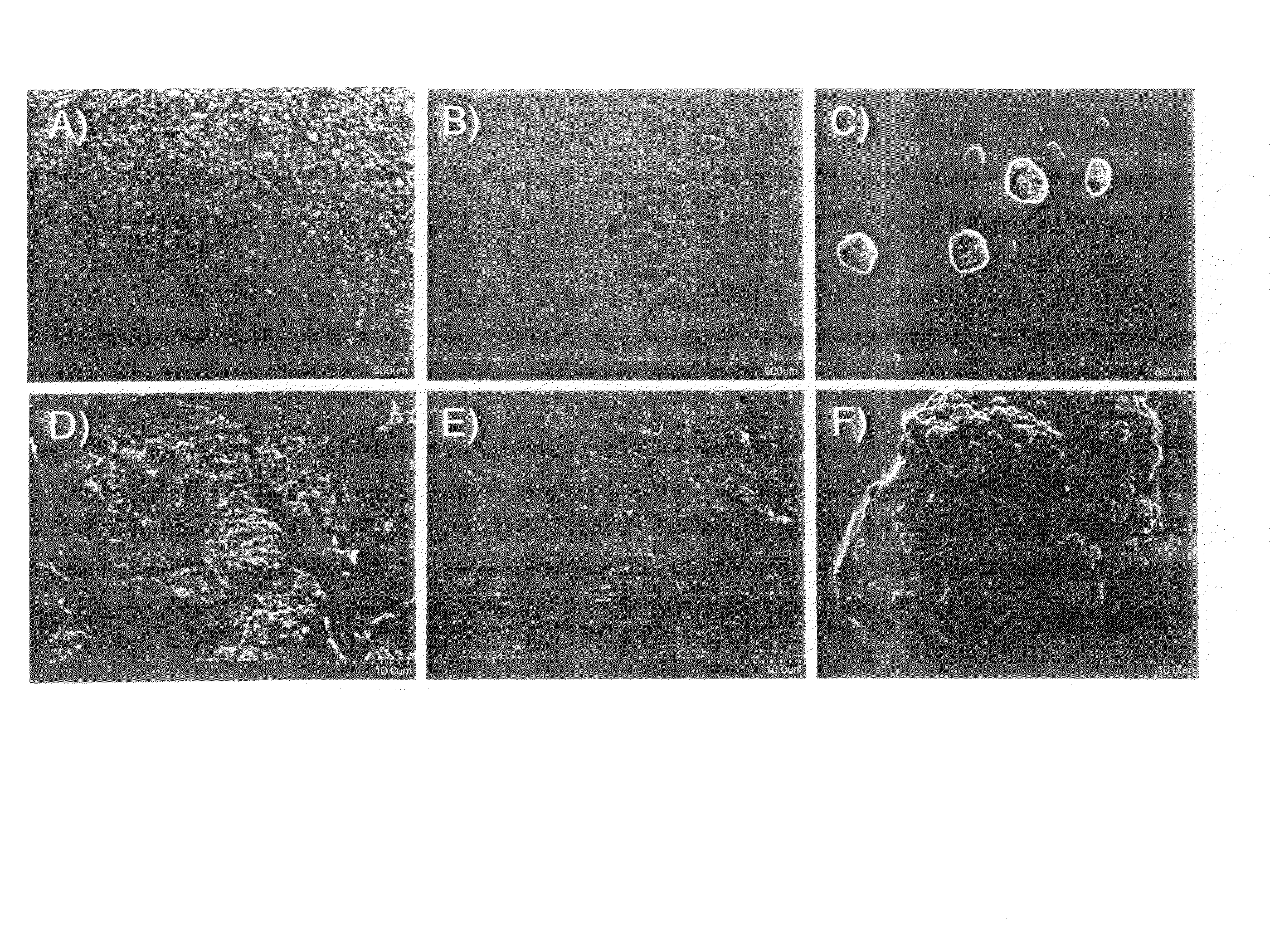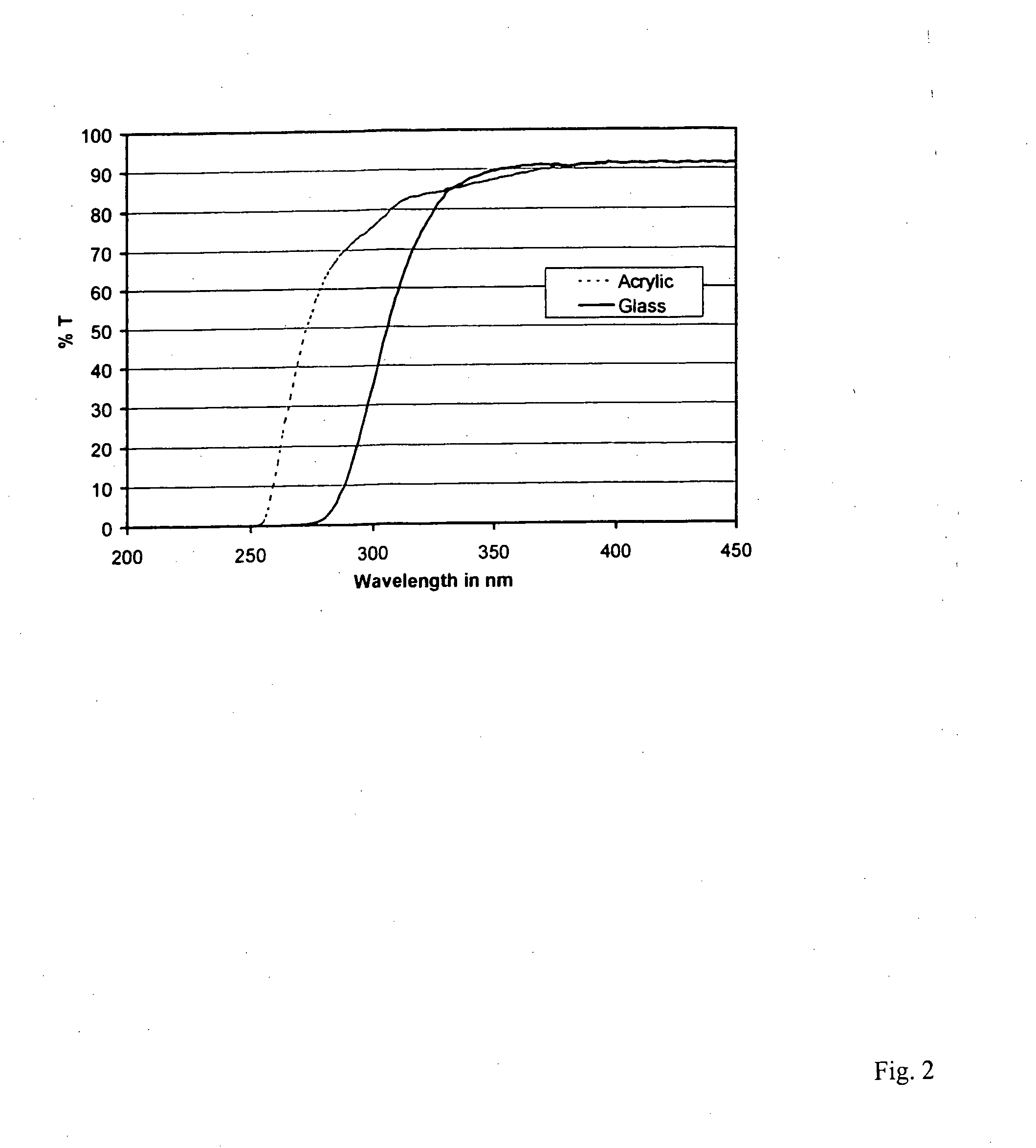Composite catalytic material and process for manufacture of such material
a technology of composite materials and catalytic materials, which is applied in the direction of physical/chemical process catalysts, organic compound/hydride/coordination complex catalysts, separation processes, etc., can solve the problem that the durability of the deposited titania films is not sufficient for many applications
- Summary
- Abstract
- Description
- Claims
- Application Information
AI Technical Summary
Benefits of technology
Problems solved by technology
Method used
Image
Examples
example 1
TiO2 Deposition on Acrylic
[0075]Titania dispersions were prepared at a concentration of 2.6% (w / v) with a solvent consisting of 90% (v / v) dichloromethane and 10% (v / v) methanol. The methanol is included to increase the amount of titania that can be dispersed in the solvent. These dispersions were sonicated in a bath for 5 minutes prior to use.
[0076]These titania dispersions were then sprayed with a compressed air sprayer onto the surface of the acrylic material, which was surface roughened with 120 grit sandpaper prior to the application of titania. (Titania films deposited on roughened acrylic surfaces are more durable and have greater photocatalytic activity than films deposited on non-roughened acrylic surfaces due to the increased surface area of the roughened acrylic.) All acrylic materials were cleaned with methanol prior to titania deposition to remove dust and other surface contaminants. An average of 0.0180 g of titania was deposited on each acrylic sample, yielding a sampl...
example 2
Direct TiO2 Deposition on Glass
[0078]The sandblasted glass supports were prepared for titania deposition by soaking overnight in a 5% nitric acid solution. After being thoroughly washed with water, the plates were then dried for 1 hr at 110° C. A 10% (w / v) aqueous dispersion of titania was then prepared by sonication for 30 minutes. The glass samples were then sprayed with this dispersion using the compressed air sprayer and dried for 30 minutes at 110° C. The samples were then re-sprayed with a second coat of titania before being heated to 300° C. at a rate of 9° C. / minute. The samples were held at 300° C. for 3 hours before slowly cooling at the natural rate of the furnace. The glass supported samples retained an average of 0.0263 g of titania with an average of 0.751 mg / cm2 of titania deposited.
example 3
TiO2 Deposition on Glass with PVA Binder
[0079]Titania was also deposited on glass with the use of a poly (vinyl acetate) binder. A 9.1% (w / w) dispersion of titania in PVA was prepared at 85° C., by the addition of 1.0 g of TiO2 and 10.0 g PVA to 100 mL of water. This dispersion was heated for 15 min and then applied to the surface of a cleaned, non-sandblasted borosilicate glass slide and smoothed to an average film thickness of 0.19 mm. The film was cured by heating at 110° C. for 2 hrs. A PVA reference sample that contained no titania was also prepared. After curing, the average mass of the PVA-titania film deposited on each sample was 0.2540 g, corresponding to a deposited titania mass of 0.0231 g, or 0.660 mg / cm2 of deposited titania.
Procedure for Analysis
A. Scanning Electron Micrographs
[0080]Scanning electron micrographs were collected on a Hitachi S-3400N microscope. Images were collected at low magnification (90×) to assess surface uniformity and under higher magnification (3...
PUM
| Property | Measurement | Unit |
|---|---|---|
| Mass | aaaaa | aaaaa |
| Mass | aaaaa | aaaaa |
| Mass | aaaaa | aaaaa |
Abstract
Description
Claims
Application Information
 Login to View More
Login to View More - R&D
- Intellectual Property
- Life Sciences
- Materials
- Tech Scout
- Unparalleled Data Quality
- Higher Quality Content
- 60% Fewer Hallucinations
Browse by: Latest US Patents, China's latest patents, Technical Efficacy Thesaurus, Application Domain, Technology Topic, Popular Technical Reports.
© 2025 PatSnap. All rights reserved.Legal|Privacy policy|Modern Slavery Act Transparency Statement|Sitemap|About US| Contact US: help@patsnap.com



